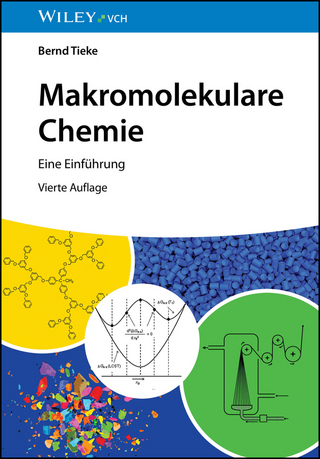Lipid Analysis in Oils and Fats
Chapman and Hall (Verlag)
978-0-7514-0414-2 (ISBN)
This book has been written to ensure that it will be of benefit to industrial analysts. Most chapters explain some of the relevant theory as well as give some historical references to place the technique in its proper context. In addition the book should appeal to academic scientists who require a good source of applications and a good set of references. Since lipids have many uses the appeal of the book will extend from the food industry to the pharmaceutical industry. R. Hamilton Formby June 1997 Acknowledgement I would wish to acknowledge the considerable help and encouragement from my wife Shiela. Abbreviations The following are the abbreviations used within this book and do not necessarily represent convention or internationally accepted abbreviations.
AAPH 2,2'-azobis (2-aminopropane )dihydrochloride Ac acetyl AchE acetylcholinesterase analog digital converter ADC AI artificial intelligence ALD aldehyde AMPL acetone mobile polar lipids atomic mass unit amu 2,2' -azo bis-2,4-dimethy lvaleronitrile AMVN ANN artificial neural network AOCS American Oil Chemists' Society APCI atmospheric pressure chemical ionization APE N-acyl-phosphatidylethanolamine API atmospheric pressure ionization ARA arachidonic acid ASG acyl-sitosterylglyceride ASMS American Society for Mass Spectrometry ATP adenosine triphosphate BE backward elimination CAD collisionally activated dissociation 3 CBC cerebroside 1 sulphate CBO Certified Brands of Origin (applied to Italian virgin olive oils) CCD charge-coupled device CE capillary electrophoresis CFAM cyclic fatty acid monomer CI chemical ionization CID collision-induced dissociation CL cardiolipin Cn:m Hydrocarbon with n carbon atoms and m double bonds CR continuum regression d. c.
1 Lipid analysis using thin-layer chromatography and the Iatroscan.- 1.1 Introduction.- 1.2 Principles of thin-layer chromatography.- 1.3 Applications of thin-layer chromatography.- 1.4 Thin-layer chromatography-flame ionization detection for lipid analysis.- 1.5 Conclusions.- Acknowledgements.- References.- 2 Characterization of lipids by supercritical fluid chromatograpahy and supercritical fluid extraction.- 2.1 Introduction.- 2.2 Supercritical fluid chromatography.- 2.3 Supercritical fluid extraction.- 2.4 Reactions in supercritical media.- 2.5 Conclusions.- Acknowledgements.- References.- 3 Static headspace gas chromatography in the analysis of oils and fats.- 3.1 Introduction.- 3.2 Theoretical background.- 3.3 Sampling systems.- 3.4 Applications of headspace gas chromatography in lipid chemistry.- 3.5 Conclusions.- References.- 4 Multinuclear high-resolution nuclear magnetic resonance spectroscopy.- 4.1 Introduction.- 4.2 The instrument.- 4.3 Principles.- 4.4 Spectra.- 4.5 Response.- 4.6 Reproducibility.- 4.7 Calibration.- 4.8 Applications.- 4.9 Quantitative determination of phospholipids: validation of the 31P NMR method.- 4.10 Instrument details.- Acknowledgements.- References.- 5 Cyclic fatty acids: qualitative and quantitative analysis.- 5.1 Introduction.- 5.2 Naturally occurring cyclic fatty acids.- 5.3 Cyclic fatty acids formed in heated vegetable oils.- 5.4 Summary.- References.- 6 Mass spectrometry of complex lipids.- 6.1 Introduction.- 6.2 Equipment and principles of soft ionization mass spectrometry.- 6.3 Applications.- 6.4 Summary and conclusions.- Acknowledgements.- References.- 7 Chromatography of food irradiation markers.- 7.1 Introduction.- 7.2 Chemical changes in irradiated foods.- 7.3 Determination of marker substances by gas chromatography.- 7.4Determination of marker substances by high-pressure liquid chromatography.- 7.5 Conclusions.- References.- 8 Development of purity criteria for edible vegetable oils.- 8.1 Introduction.- 8.2 Materials and methods.- 8.3 Results and discussion.- Acknowledgements.- References.- 9 Analysis of intact polar lipids by high-pressure liquid chromatography-mass spectrometry/tandem mass spectrometry with use of thermospray or atmospheric pressure ionization.- 9.1 Introduction.- 9.2 Theory.- 9.3 Applications.- 9.4 Practical experiences of analysis of polar lipids by means of liquid chromatography with (tandem) mass spectrometry.- 9.5 Summary.- References.- 10 The exploitation of chemometric methods in the analysis of spectroscopic data: application to olive oils.- 10.1 Introduction.- 10.2 Olive oil.- 10.3 Data acquisition methods.- 10.4 Multivariate methods.- 10.5 Concluding remarks and future prospects.- Acknowledgements.- References.
| Zusatzinfo | XXII, 386 p. |
|---|---|
| Verlagsort | London |
| Sprache | englisch |
| Maße | 155 x 235 mm |
| Themenwelt | Naturwissenschaften ► Chemie ► Organische Chemie |
| Technik ► Lebensmitteltechnologie | |
| ISBN-10 | 0-7514-0414-4 / 0751404144 |
| ISBN-13 | 978-0-7514-0414-2 / 9780751404142 |
| Zustand | Neuware |
| Haben Sie eine Frage zum Produkt? |
aus dem Bereich




